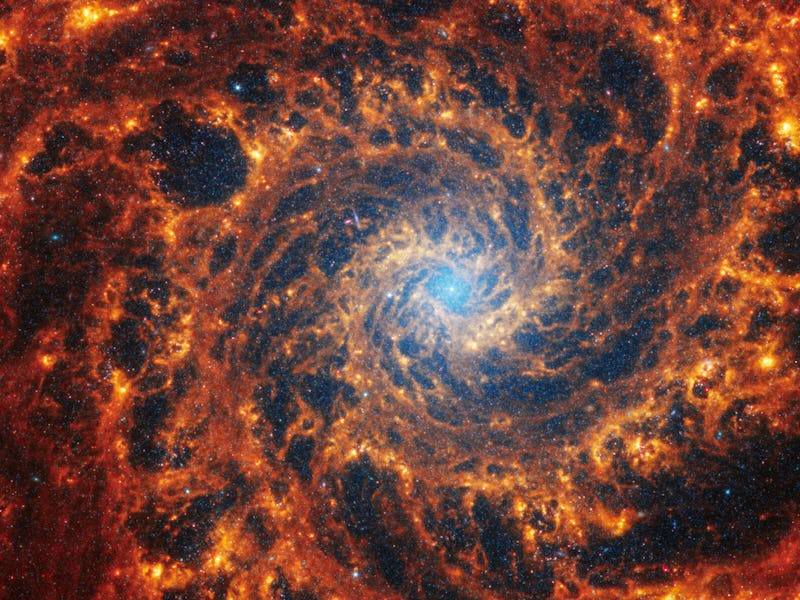Look! Webb Telescope Captured Stunning Portraits Of 19 Spiral Galaxies
Take breaks to avoid dizziness.

Take a close look at the galaxies featured in the latest visual treasure trove from the James Webb Space Telescope (JWST) — and try not to get lost.
Is it lace, latticework, or spiral galaxies?
The JWST took these images of 19 galaxies for the PHANGS program, which is short for Physics at High Angular resolution in Nearby GalaxieS. The program has data from Hubble and ground-based telescopes in Chile, too. Now, thanks to the new JWST data, astronomers are probing even deeper into the structures of galaxies.
The JWST images reveal 19 face-on spiral galaxies in all their glory.
“It’s oh-so-easy to be absolutely mesmerized by these spiral galaxies. Follow their clearly defined arms, which are brimming with stars, to their centers, where there may be old star clusters and — sometimes — active supermassive black holes,” NASA officials said of these images in a statement published on Monday.
These 19 galaxies are, relatively speaking, not that far from Earth. These galaxies are located throughout various constellations and vary from 20 million to 80 million light-years away.
The galaxies also share some common features. Most of them have hearts that look hazy and blue. “Within the core are populations of older stars, represented by many pinpoints of blue light,” according to NASA’s description of NGC 628.
These blue stars came before those at the outer part of the galactic disks. “Evidence shows that galaxies grow from inside out — star formation begins at galaxies’ cores and spreads along their arms, spiraling away from the center,” according to NASA. “The farther a star is from the galaxy’s core, the more likely it is to be younger.”
Cores with pinkish overtones could mean one of two things. The old stars could be so abundant and so densely packed that they saturate the image. Or, they could indicate supermassive black holes are actively feeding on the dust and gas nearby.
From these cores, “spiny” spiral arms stretch out. In many images, the infrared data from JWST is detailed enough to give the galaxies the appearance of nautilus shells.
They’re made of dust, gas, and stars. Altogether, the dazzling collection of images could be packed with clues about how stars evolve.
“By precisely cataloging all types of stars, we can build a more reliable, holistic view of their life cycles,” Adam Leroy, a professor of astronomy at the Ohio State University in Columbus, said in NASA's statement.
The woven, trellis structures of the spiral arms tell astronomers something. “We think of these like waves, and their spacing tells us a lot about how a galaxy distributes its gas and dust,” Erik Rosolowsky, a professor of physics at the University of Alberta in Edmonton, Canada, said in NASA’s statement. Little by little, these shapes help astronomers conceptualize a blueprint for galaxies.